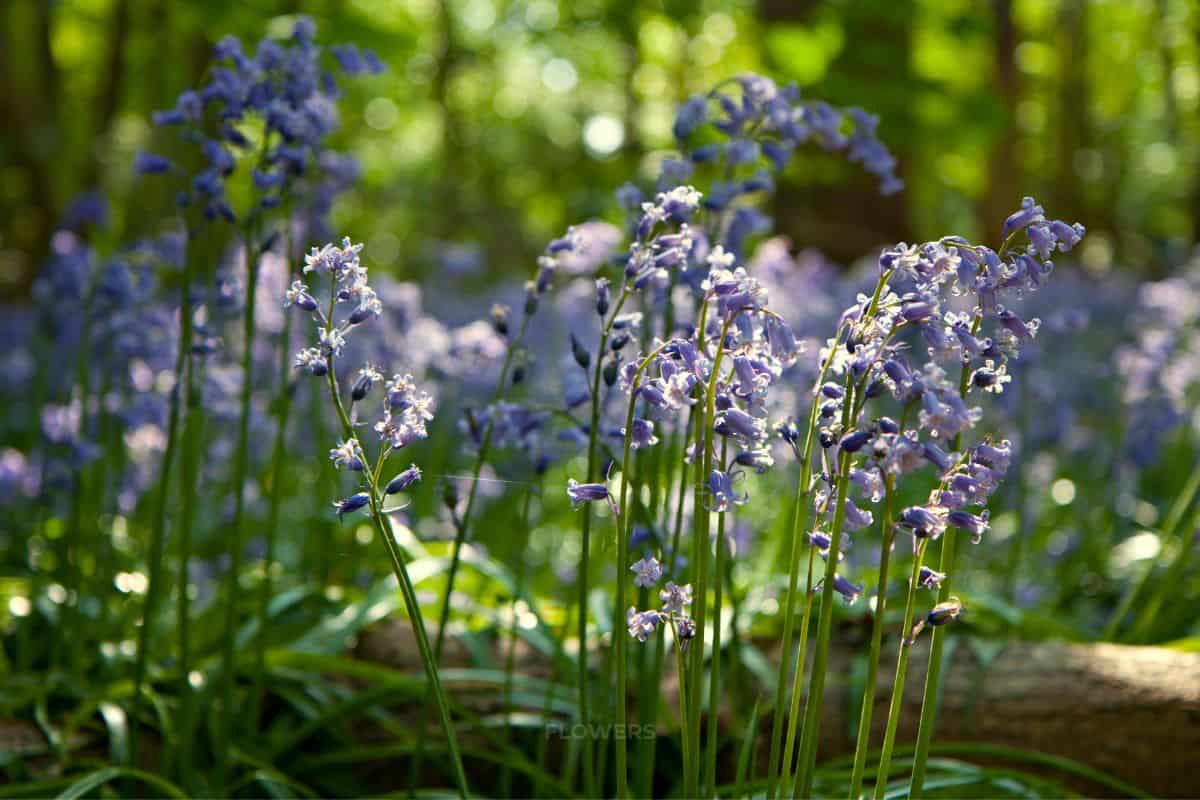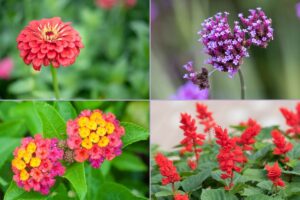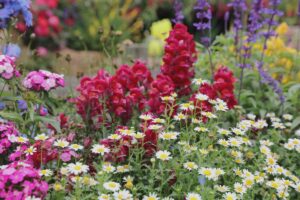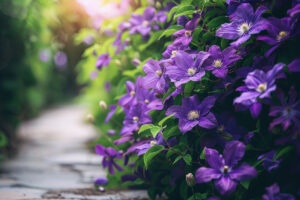This page may contain affiliate links. If you click and buy, we might get a small commission at no cost to you.
Planting native flowers is one of the easiest and most rewarding things you can do for your yard. These flowers evolved right here in North America, so they’re built to handle the seasons, the soil, and the local bugs. You’ll spend less time babying your plants, and more time enjoying them. That’s my kind of gardening.
In this list, I’m sharing 19 native flowers you can actually plant this year. Some of these might already be familiar, and others you may have never heard of. But they all belong here, and if you give them a spot in your garden, they’ll return the favor.
1. Purple coneflower
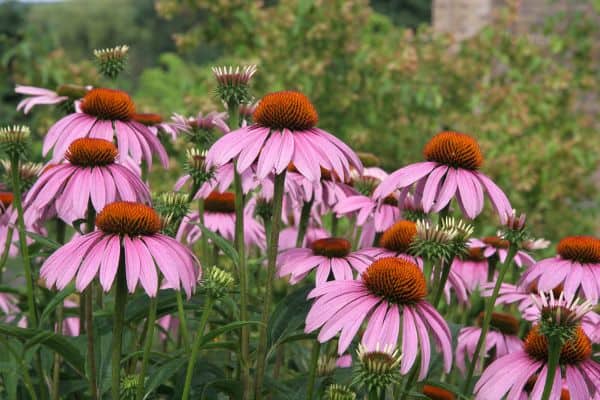
Scientific name: Echinacea purpurea
Blooms: Summer to early fall
Best for: Sunny borders, cottage gardens, and naturalized beds
Probably the most iconic native flower in the U.S. Purple coneflowers are hardy, pollinator-friendly, and bloom for ages. You’ll find them in sunny beds, prairies, and even along highways.
Its large, daisy-like petals surround a spiky, orange center cone that adds great texture to the garden. The upright habit makes it perfect for layered plantings, and it holds up well in both formal beds and wilder settings. Once established, it’s surprisingly tolerant of heat and drought, and the spent seed heads add winter interest (and a snack for goldfinches if you leave them standing).
2. Butterfly weed
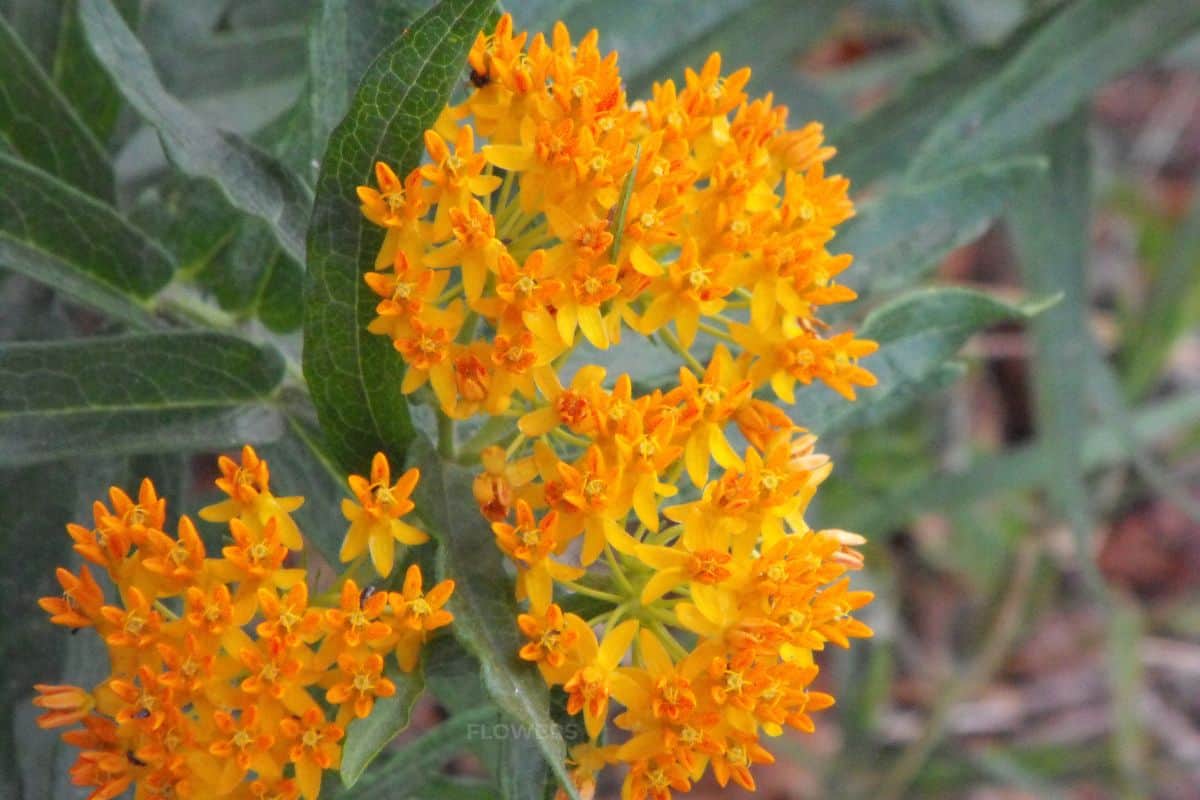
Scientific name: Asclepias tuberosa
Blooms: Late spring to summer
Best for: Dry spots, roadside gardens, and tough full-sun areas
Don’t let the word “weed” fool you… this is one of the most brilliant native perennials you can grow. Its vibrant orange blooms are a bold statement in any sunny garden, and it’s a key host plant for monarch butterflies.
Butterfly weed thrives in poor soils and doesn’t like to be overwatered, which makes it an ideal choice for problem spots where other flowers struggle. It stays relatively compact, doesn’t flop, and adds a punch of color right when early summer heat sets in.
3. Passionflower
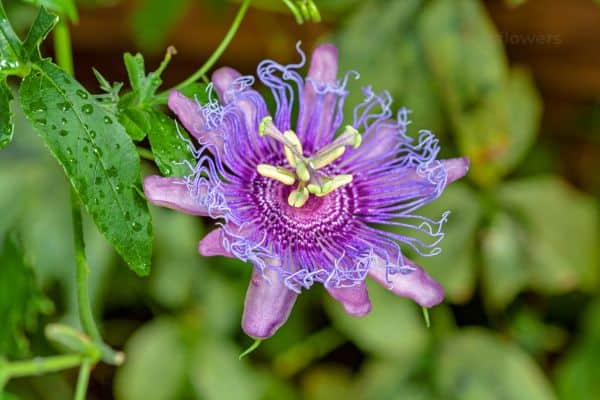
Scientific name: Passiflora incarnata
Blooms: Mid to late summer
Best for: Fences, trellises, and naturalistic vine plantings
This flower looks too exotic to be native, but it’s right at home in the Southeast. Passionflower has complex, otherworldly blooms in shades of purple and white that stop people in their tracks.
It grows as a vigorous vine and can cover a trellis or fence by midsummer. While it may die back to the ground in winter, it returns with energy each spring. The fruit, called maypops, is edible, and its unusual appearance makes it a conversation starter in any landscape.
4. Wild phlox
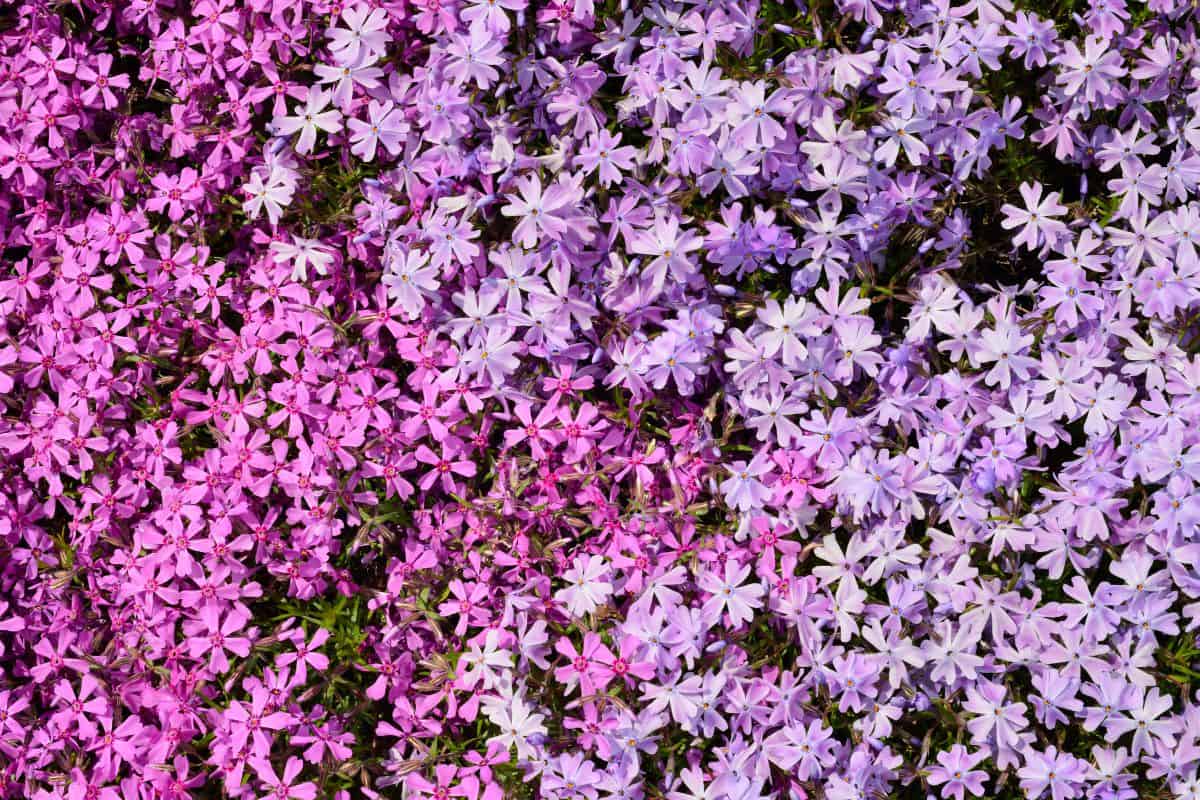
Scientific name: Phlox divaricata
Blooms: Early to mid-spring
Best for: Woodland edges, shaded beds, and spring pollinator patches
Wild phlox brings a soft carpet of lavender-blue blooms to shaded areas just as the growing season begins. It spreads gently by runners and fills in under trees where few other perennials thrive.
The flowers are lightly fragrant and look best when planted in drifts or as part of a naturalistic woodland garden. It pairs well with spring ephemerals and gives pollinators an early-season food source before summer flowers kick in.
5. Wild geranium
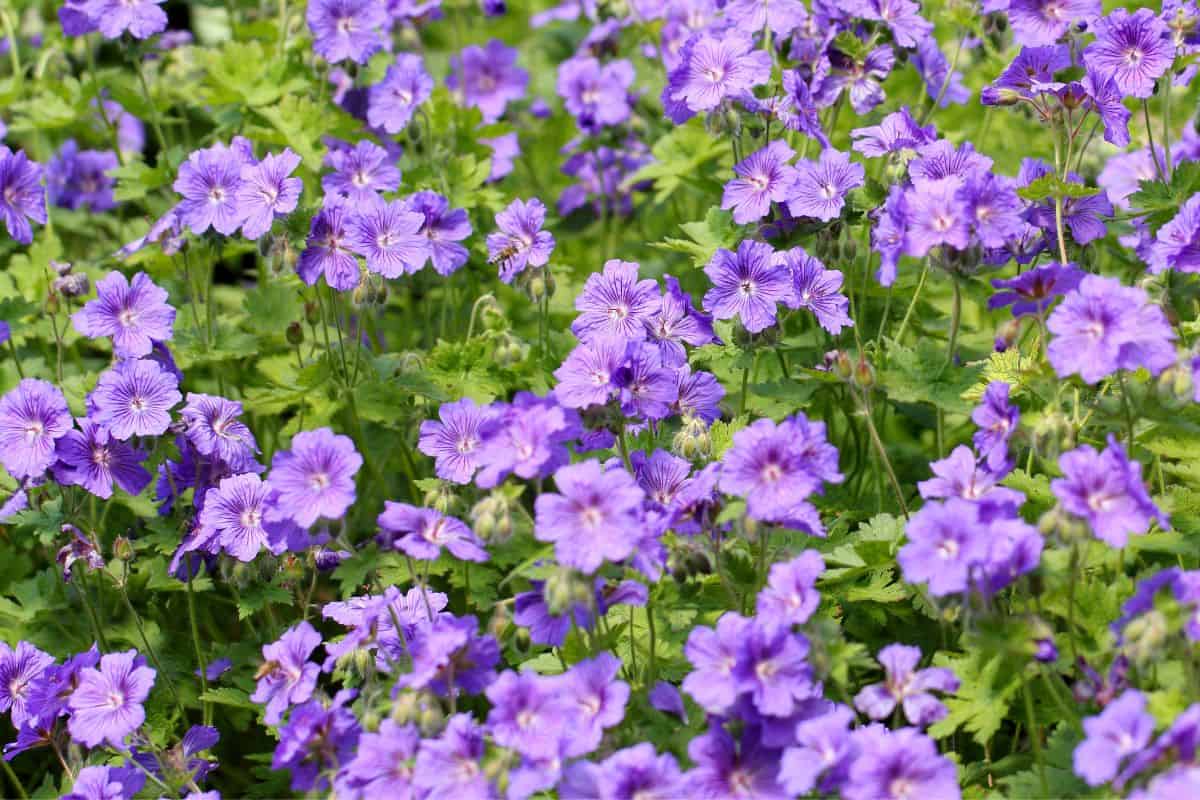
Scientific name: Geranium maculatum
Blooms: Mid to late spring
Best for: Partial shade, native plant gardens, and ground cover
Wild geranium is one of the most graceful and reliable spring bloomers in Eastern woodlands. Its soft pink to lavender flowers sit above attractive, deeply lobed foliage that stays lush even after blooming ends.
This plant does well in dappled shade and is great for bridging the gap between early spring bulbs and the full flush of summer perennials. It also resists deer and spreads slowly without becoming invasive.
6. Trumpet honeysuckle
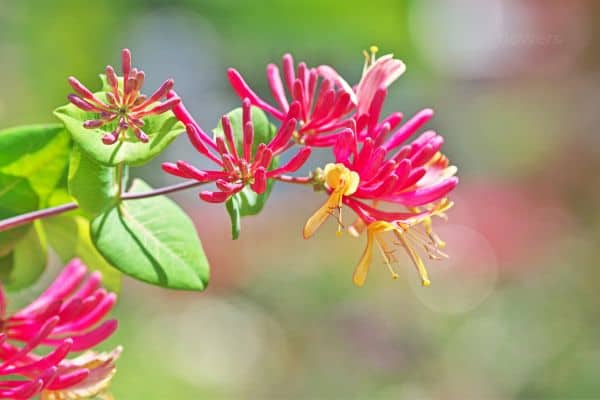
Scientific name: Lonicera sempervirens
Blooms: Late spring to early summer
Best for: Trellises, arbors, and hummingbird gardens
Trumpet honeysuckle is a native vine with clusters of tubular red flowers that stand out in any garden. Unlike the invasive Japanese honeysuckle, this species behaves itself and supports native wildlife.
It climbs with twining stems and can reach 10 to 15 feet tall, making it ideal for vertical interest. Its blooms are long-lasting, and the glossy green leaves remain attractive through the summer. Birds also enjoy the bright red berries that appear later in the season.
7. Wild rose
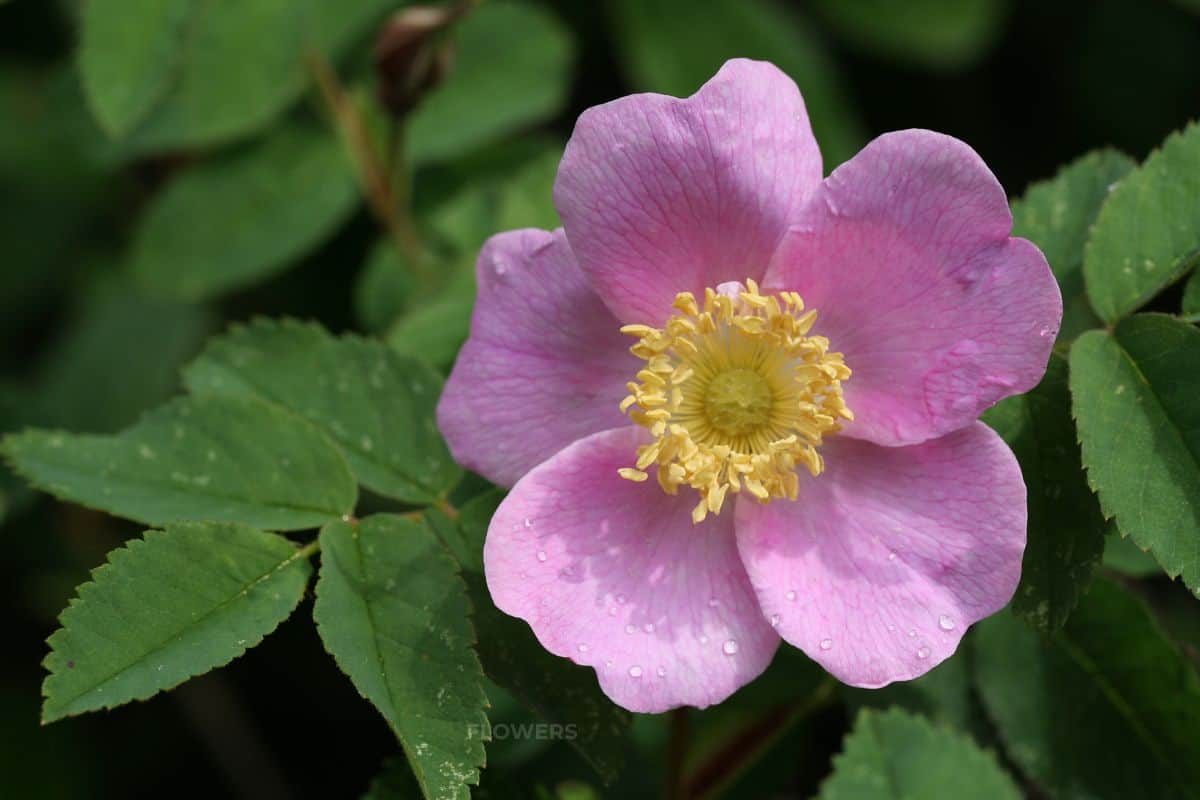
Scientific name: Rosa carolina
Blooms: Early to mid-summer
Best for: Naturalized hedges, borders, and wildlife-friendly spaces
This native shrub rose has soft pink petals and a golden center, with a simpler, more elegant look than most modern hybrids. It grows in a more relaxed, open form and has a light, pleasant scent.
Wild rose spreads by underground rhizomes and forms small thickets over time, which provide shelter for birds and small animals. It also produces red hips in the fall, adding seasonal interest and food for wildlife.
8. Scarlet beebalm
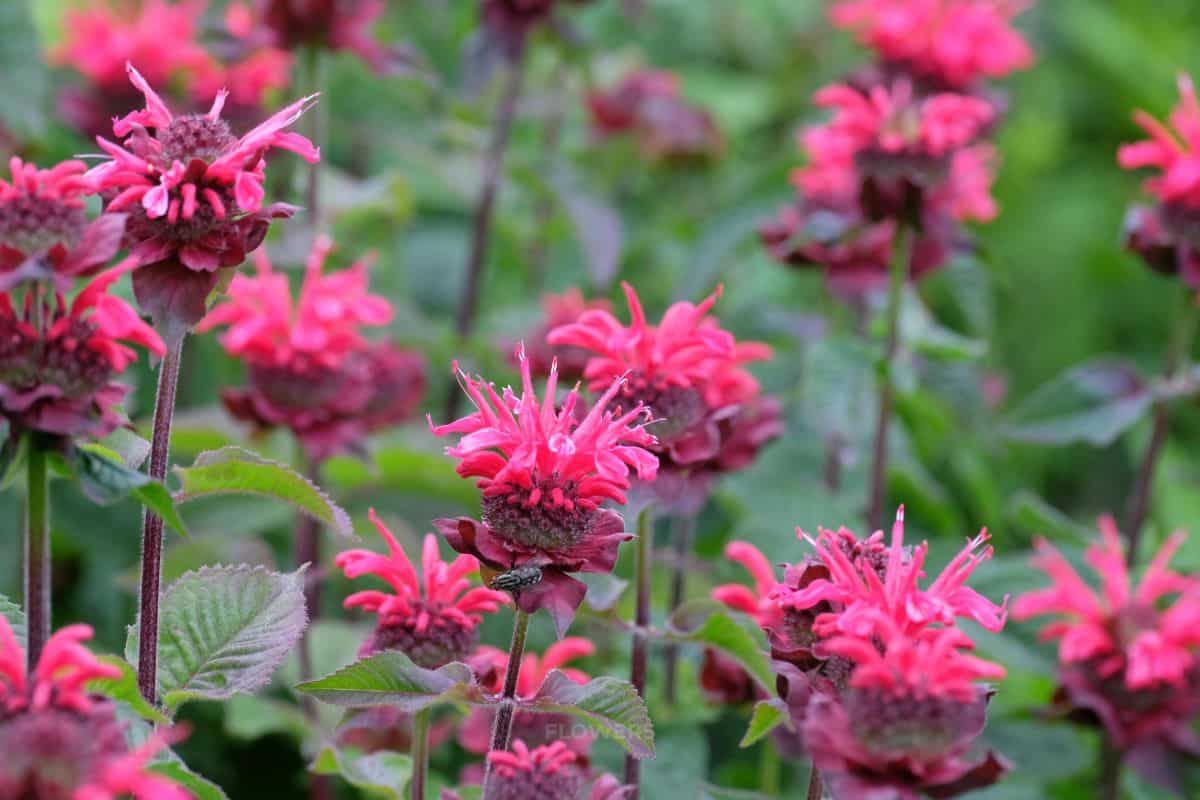
Scientific name: Monarda didyma
Blooms: Midsummer
Best for: Moist soil, pollinator gardens, and vibrant summer borders
Scarlet beebalm explodes with rich red blooms that resemble fireworks. It’s a showy plant that commands attention and thrives in sunny spots with decent moisture.
The square stems and aromatic leaves place it in the mint family, and it’s been used historically for teas and herbal remedies. It spreads by rhizomes but is easy to manage in most garden settings.
9. Blue wild indigo
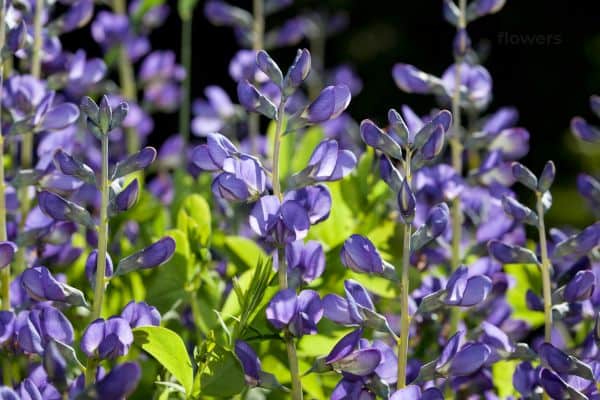
Scientific name: Baptisia australis
Blooms: Late spring to early summer
Best for: Sunny beds, prairie-style plantings, and foundation borders
This tough perennial forms a bushy, shrub-like clump with spikes of deep blue flowers. It’s striking when in bloom and offers good structure even when not flowering.
Blue wild indigo fixes nitrogen in the soil, benefiting nearby plants. The seed pods that follow flowering are black, rattling capsules that add interest into fall.
10. Blazing star

Scientific name: Liatris spicata
Blooms: Midsummer
Best for: Pollinator beds, tall borders, and vertical accent plantings
Blazing star sends up tall spikes of purple flowers that bloom from the top down, a rare trait among perennials. It’s a strong vertical accent that pairs well with grasses and open meadows.
This plant attracts butterflies like crazy and does best in full sun with decent drainage. It’s also surprisingly drought-tolerant once established.
11. Winecup

Scientific name: Callirhoe involucrata
Blooms: Late spring through summer
Best for: Ground cover, rock gardens, and sunny slopes
Winecup is a trailing perennial with deep magenta, chalice-shaped blooms that close at night or during cloudy weather. It stays low to the ground and spreads out like a mat.
It thrives in poor, dry soil and hot conditions, making it an ideal candidate for areas that get neglected. Its foliage is also attractive, with deeply cut leaves that resemble those of geraniums.
12. Prairie smoke
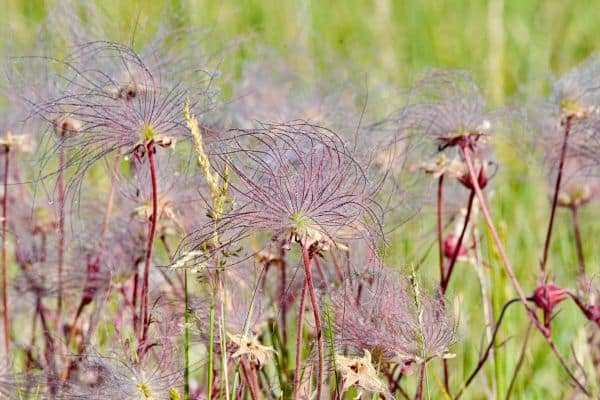
Scientific name: Geum triflorum
Blooms: Late spring
Best for: Rock gardens, gravel beds, and prairie restorations
This small prairie native gets its name from the wispy, feathery seed heads that follow its pinkish-red blooms. It adds a whimsical, dreamy look to the garden.
Prairie smoke prefers full sun and well-drained soil. It forms tidy mounds and is especially useful in low-water landscapes or naturalized meadow designs.
13. Firewheel

Scientific name: Gaillardia pulchella
Blooms: Early summer through fall
Best for: Hot, sunny areas and coastal or sandy soils
Firewheel, or Indian blanket flower, lives up to its name with bold red and yellow daisy-like flowers that bloom for months. It’s native to the southern U.S. and flourishes in heat and drought.
It reseeds readily and works well in wildflower mixes, especially for roadside or no-fuss gardens. Even when the petals drop, the seed heads add texture and visual interest.
14. Columbine
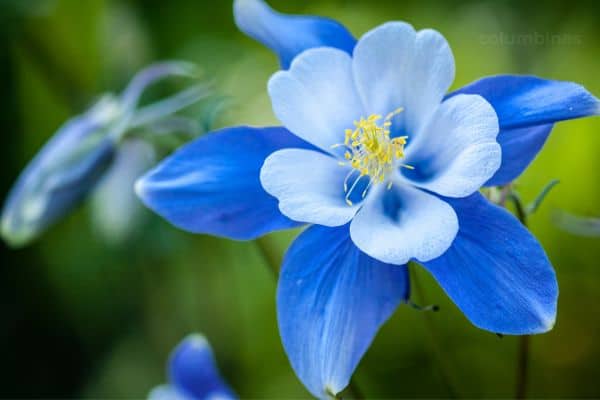
Scientific name: Aquilegia canadensis
Blooms: Mid to late spring
Best for: Woodland edges, shade gardens, and early-season color
Eastern red columbine is a native wildflower with nodding red and yellow blooms that resemble tiny lanterns. The flower shape is designed for hummingbirds, which often arrive just as it begins to bloom in spring.
It thrives in partial shade and well-drained soil, reseeds politely, and pairs beautifully with ferns, foamflower, and woodland phlox. The delicate foliage persists through summer and adds a soft texture to the shade garden.
15. Bluebell
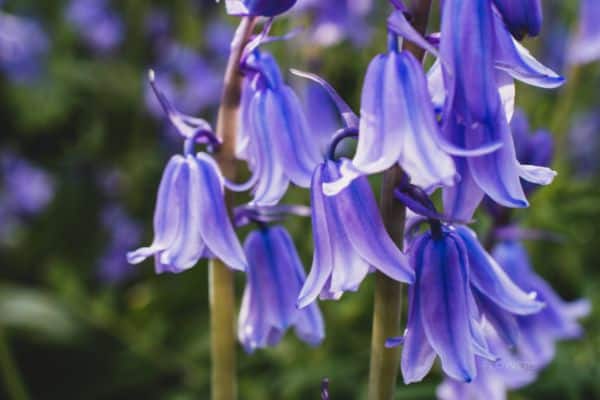
Scientific name: Mertensia virginica
Blooms: Early spring
Best for: Moist woodland gardens and shaded naturalized areas
Virginia bluebells are among the most charming spring ephemerals, blooming in clusters of pink buds that open into sky-blue, bell-shaped flowers. They’re one of the first native perennials to bloom each year.
These plants go dormant by summer, so it’s best to pair them with later-emerging companions like hostas or woodland grasses. They spread slowly by seed and naturalize in the right conditions.
16. Wild bergamot
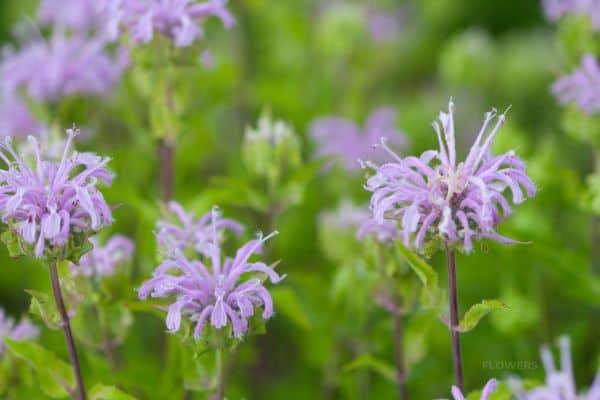
Scientific name: Monarda fistulosa
Blooms: Midsummer
Best for: Meadows, borders, and herbal-themed gardens
Wild bergamot is a lavender-blooming, aromatic perennial that adds an untamed look to any planting. Its ragged flower heads and tall stems fit beautifully into prairie-style gardens or informal beds.
It’s also a traditional medicinal plant with a long history of use by Indigenous peoples. The leaves have a spicy scent and can be used to make a tea similar to Earl Grey.
17. Shooting star
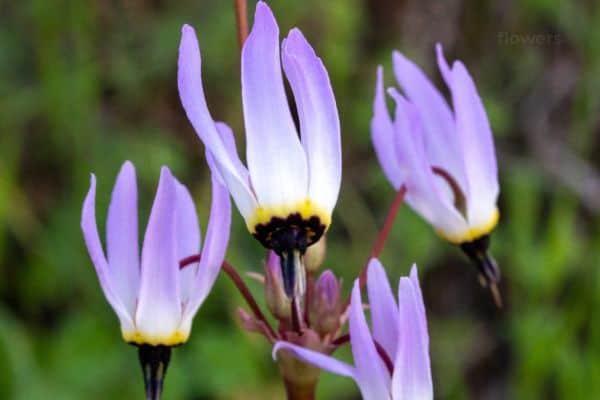
Scientific name: Dodecatheon meadia
Blooms: Mid to late spring
Best for: Open woods, moist meadows, and spring wildflower displays
Shooting star gets its name from the way the blooms appear to be falling through the air, with petals swept back and pointed down like a meteor in flight. The flowers range from white to pale pink to lavender.
This species prefers moist, well-drained soil and light shade. It goes dormant in summer, so it works well with longer-season companions that fill in once it disappears.
18. Snowbell
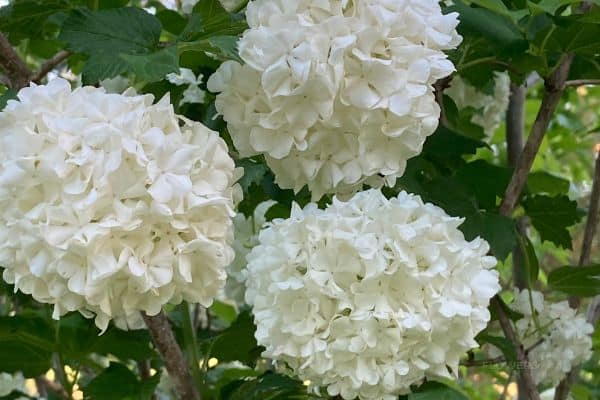
Scientific name: Styrax americana
Blooms: Late spring
Best for: Woodland edges and damp, acidic soils
American snowbell is a small native tree or large shrub with pendulous white flowers that dangle like bells. It’s understated but elegant, and fits perfectly in the midstory of a native woodland garden.
The lightly fragrant blooms attract small native bees, and the tree’s smooth gray bark adds year-round appeal. It prefers moist, slightly acidic soils but adapts well to average garden conditions with some shade.
19. Rose gentian
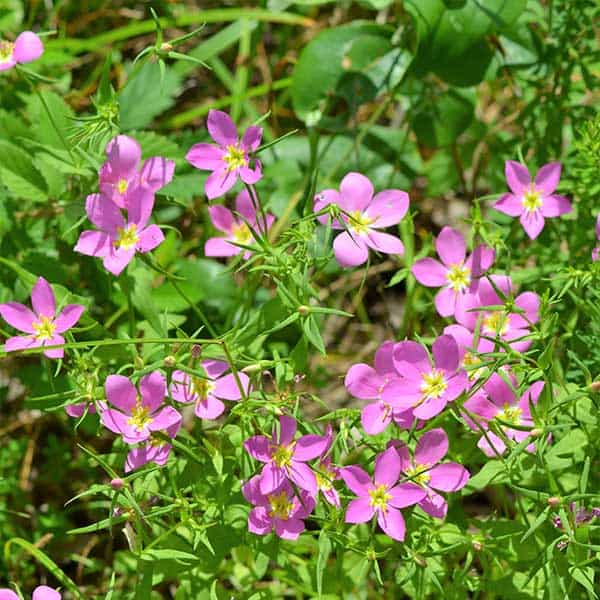
Scientific name: Sabatia angularis
Blooms: Summer
Best for: Open fields, sunny slopes, and naturalized meadows
Rose gentian is a lesser-known but stunning wildflower with bright pink, star-shaped blooms and golden centers. It grows on tall stems that hold their own among grasses and other natives.
This biennial species often reseeds itself and thrives in full sun and well-drained soil. It’s a great choice if you’re looking to expand your garden’s bloom season into summer with something truly unique.
